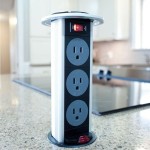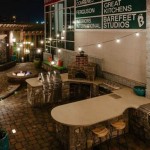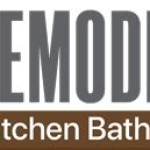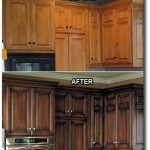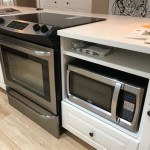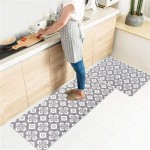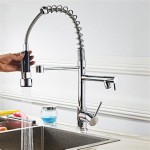Kitchen Cabinets That Sit On Countertop: Exploring Design and Functionality
Kitchen design increasingly focuses on maximizing space, improving efficiency, and enhancing aesthetic appeal. One element gaining popularity is the use of kitchen cabinets designed to sit directly on the countertop. These cabinets, often referred to as countertop cabinets, offer a unique approach to storage and organization, differing significantly from traditional wall-mounted or base cabinets. The purpose of this article is to provide a comprehensive overview of kitchen cabinets designed to sit on the countertop, exploring their various types, benefits, design considerations, and potential drawbacks.
Countertop cabinets serve a distinct function in the kitchen. Instead of being fixed to the wall or floor, they rest on the available countertop surface. This arrangement allows for enhanced accessibility and a different visual dynamic within the kitchen space. These cabinets are suitable for a variety of purposes, from storing frequently used items to displaying decorative elements. The versatility of countertop cabinets makes them a valuable addition to diverse kitchen layouts and design preferences.
Key Benefits of Countertop Cabinets
Countertop cabinets offer several advantages over traditional cabinet configurations. These benefits range from improved accessibility to enhanced design flexibility.
Enhanced Accessibility: One of the primary benefits of countertop cabinets is the improved accessibility they provide. Items stored within these cabinets are typically at eye level and within easy reach, reducing the need to bend or stretch. This accessibility is particularly beneficial for individuals with mobility limitations or those who prefer to have frequently used items readily available. The ergonomic design of countertop cabinets contributes to a more user-friendly kitchen environment.
Optimized Space Utilization: Countertop cabinets are an excellent solution for optimizing space, especially in kitchens with limited storage. They can be strategically placed in areas where traditional cabinets may not be feasible, such as above appliances or in corners. By utilizing the often-overlooked space on countertops, these cabinets significantly increase storage capacity without requiring major renovations or structural changes. They can hold spices, utensils, small appliances, or even serve as a coffee station or bar area.
Design Flexibility and Aesthetic Appeal: Countertop cabinets offer considerable design flexibility, allowing homeowners to customize the look and feel of their kitchen. They can be crafted from a variety of materials, including wood, metal, glass, and laminate, and can be styled to complement existing cabinetry or create a unique focal point. The ability to incorporate different door styles, finishes, and hardware further enhances the design possibilities. Countertop cabinets can be used to add a touch of elegance, rustic charm, or modern sophistication to the kitchen, depending on the homeowner's preferences.
Ease of Installation and Relocation: Compared to traditional cabinets that require professional installation and can be difficult to move, countertop cabinets are relatively easy to install and relocate. Many countertop cabinets are designed to be freestanding, requiring minimal assembly and no permanent attachment to walls or surfaces. This ease of installation makes them an ideal option for renters or homeowners who anticipate moving in the future. The ability to relocate countertop cabinets also allows for greater flexibility in rearranging the kitchen layout as needed.
Organization and Clutter Reduction: Countertop cabinets effectively contribute to kitchen organization by providing designated storage spaces for various items. This organized storage helps to reduce clutter on countertops, creating a cleaner and more functional workspace. By keeping frequently used items within easy reach, countertop cabinets encourage a more streamlined workflow in the kitchen. They can be particularly useful for storing small appliances like toasters and blenders, which can otherwise take up valuable counter space.
Types of Kitchen Cabinets That Sit On Countertop
Countertop cabinets come in various styles and configurations, each designed to meet specific storage needs and aesthetic preferences:
Hutch-Style Cabinets: Hutch-style cabinets are among the most common types of countertop cabinets. They typically feature a combination of open shelves and enclosed cabinets, providing both display space and concealed storage. Hutch cabinets are often used to store dishes, glassware, and decorative items, adding visual interest to the kitchen. They can be customized with features such as built-in lighting or glass doors to enhance their aesthetic appeal. The hutch-style cabinet provides a traditional look while maintaining practicality.
Spice Rack Cabinets: Designed specifically for storing spices and seasonings, spice rack cabinets are a practical addition to any kitchen. These cabinets often feature tiered shelves or pull-out drawers that allow for easy organization and access to spices. Spice rack cabinets can be placed near the stovetop or food preparation area for convenient use. They help to keep spices organized and prevent them from cluttering up the countertop or pantry.
Appliance Garage Cabinets: Appliance garage cabinets are designed to conceal small appliances such as toasters, blenders, and coffee makers. These cabinets typically feature a roll-up or hinged door that allows for easy access to the appliances while keeping them hidden from view when not in use. Appliance garage cabinets help to maintain a clean and uncluttered countertop, enhancing the overall aesthetic of the kitchen. They are particularly useful for kitchens with limited counter space.
Corner Cabinets: Corner cabinets are designed to fit into the corners of countertops, maximizing the use of space in often-overlooked areas. These cabinets can be used to store a variety of items, from cookware to small appliances. Corner cabinets can be customized with features such as lazy Susans or pull-out shelves to improve accessibility. They provide a practical solution for utilizing corner spaces and increasing storage capacity.
Display Cabinets: Display cabinets are designed to showcase decorative items such as vases, collectibles, and family heirlooms. These cabinets typically feature glass doors or open shelves that allow for easy viewing of the displayed items. Display cabinets can be used to add a personal touch to the kitchen and create a focal point. They can be customized with features such as built-in lighting to further enhance their aesthetic appeal.
Rolling Kitchen Islands with Countertop Cabinets: Rolling kitchen islands with countertop cabinets offer a flexible and mobile storage solution. These islands typically feature a combination of cabinets, drawers, and shelves, providing ample storage space for various kitchen items. The wheels allow for easy movement of the island, making it a versatile addition to the kitchen. Rolling kitchen islands can be used as a portable workstation or serving area, providing added functionality to the kitchen.
Design Considerations When Choosing Countertop Cabinets
Selecting the right countertop cabinets requires careful consideration of various factors, including the kitchen's design, available space, and storage needs:
Matching Existing Kitchen Design: It is important to choose countertop cabinets that complement the existing design of the kitchen. Consider the style, color, and material of the existing cabinetry and choose countertop cabinets that blend seamlessly with the overall aesthetic. A cohesive design will create a more visually appealing and harmonious kitchen space. Mismatched cabinets can detract from the overall look and feel of the kitchen.
Countertop Space and Dimensions: Before purchasing countertop cabinets, measure the available countertop space to ensure that the cabinets will fit properly. Consider the dimensions of the cabinets, including their height, width, and depth, to ensure that they will not overcrowd the countertop. It is also important to consider the placement of the cabinets in relation to other kitchen elements, such as the sink, stovetop, and refrigerator. Adequate space should be left for food preparation and other kitchen tasks.
Storage Needs and Functionality: Evaluate the storage needs and functionality of the countertop cabinets. Consider what items will be stored in the cabinets and choose cabinets that are designed to accommodate those items. For example, if spices will be stored in the cabinets, choose spice rack cabinets. If small appliances will be stored, choose appliance garage cabinets. It is also important to consider the accessibility of the cabinets and choose cabinets with features such as pull-out shelves or lazy Susans to improve accessibility.
Material and Durability: Choose countertop cabinets that are made from durable materials that can withstand the wear and tear of daily use. Common materials for countertop cabinets include wood, metal, glass, and laminate. Wood cabinets offer a classic and timeless look, while metal cabinets provide a more modern and industrial aesthetic. Glass cabinets are ideal for displaying decorative items, while laminate cabinets are a cost-effective and low-maintenance option. Consider the durability of the material and choose cabinets that are resistant to scratches, stains, and moisture.
Budget Considerations: Set a budget for the countertop cabinets and choose cabinets that fit within that budget. The price of countertop cabinets can vary widely depending on the material, size, and features. Consider the long-term value of the cabinets and choose cabinets that offer a good balance of quality and affordability. It is also important to factor in the cost of installation, if applicable.
Door Style and Hardware: The door style and hardware of the countertop cabinets can significantly impact the overall aesthetic of the kitchen. Choose door styles and hardware that complement the existing cabinetry and design of the kitchen. Common door styles include shaker, raised panel, and flat panel. Hardware options include knobs, pulls, and handles. Consider the functionality of the hardware and choose hardware that is easy to grip and use.
Countertop cabinets offer a practical and aesthetically pleasing solution for enhancing kitchen storage and organization. By carefully considering the various types, benefits, and design considerations, homeowners can select the ideal countertop cabinets to suit their individual needs and preferences. These cabinets not only provide additional storage but also contribute to the overall functionality and visual appeal of the kitchen space.

Countertop Cabinets In The Kitchen Honeycomb Home

Countertop Cabinets In The Kitchen Honeycomb Home

Countertop Cabinets In The Kitchen Honeycomb Home

Pantry Cabinet Sitting On Countertop Transitional Kitchen

Countertop Cabinets In The Kitchen Honeycomb Home

Countertop Cabinets In The Kitchen Honeycomb Home

15 Kitchen Countertop Cabinet Ideas Guaranteed To Add Old World Charm Hunker Home Decor Renovation Kitchens

Countertop Cabinets In The Kitchen Honeycomb Home

Inset Kitchen Cabinets On Semi Custom Budget Stefana Silber

Install Cabinets That Sit On Kitchen Countertop
See Also

